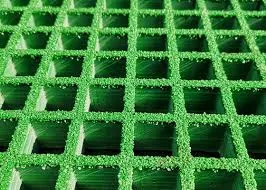
-
 Afrikaans
Afrikaans -
 Albanian
Albanian -
 Amharic
Amharic -
 Arabic
Arabic -
 Armenian
Armenian -
 Azerbaijani
Azerbaijani -
 Basque
Basque -
 Belarusian
Belarusian -
 Bengali
Bengali -
 Bosnian
Bosnian -
 Bulgarian
Bulgarian -
 Catalan
Catalan -
 Cebuano
Cebuano -
 China
China -
 China (Taiwan)
China (Taiwan) -
 Corsican
Corsican -
 Croatian
Croatian -
 Czech
Czech -
 Danish
Danish -
 Dutch
Dutch -
 English
English -
 Esperanto
Esperanto -
 Estonian
Estonian -
 Finnish
Finnish -
 French
French -
 Frisian
Frisian -
 Galician
Galician -
 Georgian
Georgian -
 German
German -
 Greek
Greek -
 Gujarati
Gujarati -
 Haitian Creole
Haitian Creole -
 hausa
hausa -
 hawaiian
hawaiian -
 Hebrew
Hebrew -
 Hindi
Hindi -
 Miao
Miao -
 Hungarian
Hungarian -
 Icelandic
Icelandic -
 igbo
igbo -
 Indonesian
Indonesian -
 irish
irish -
 Italian
Italian -
 Japanese
Japanese -
 Javanese
Javanese -
 Kannada
Kannada -
 kazakh
kazakh -
 Khmer
Khmer -
 Rwandese
Rwandese -
 Korean
Korean -
 Kurdish
Kurdish -
 Kyrgyz
Kyrgyz -
 Lao
Lao -
 Latin
Latin -
 Latvian
Latvian -
 Lithuanian
Lithuanian -
 Luxembourgish
Luxembourgish -
 Macedonian
Macedonian -
 Malgashi
Malgashi -
 Malay
Malay -
 Malayalam
Malayalam -
 Maltese
Maltese -
 Maori
Maori -
 Marathi
Marathi -
 Mongolian
Mongolian -
 Myanmar
Myanmar -
 Nepali
Nepali -
 Norwegian
Norwegian -
 Norwegian
Norwegian -
 Occitan
Occitan -
 Pashto
Pashto -
 Persian
Persian -
 Polish
Polish -
 Portuguese
Portuguese -
 Punjabi
Punjabi -
 Romanian
Romanian -
 Russian
Russian -
 Samoan
Samoan -
 Scottish Gaelic
Scottish Gaelic -
 Serbian
Serbian -
 Sesotho
Sesotho -
 Shona
Shona -
 Sindhi
Sindhi -
 Sinhala
Sinhala -
 Slovak
Slovak -
 Slovenian
Slovenian -
 Somali
Somali -
 Spanish
Spanish -
 Sundanese
Sundanese -
 Swahili
Swahili -
 Swedish
Swedish -
 Tagalog
Tagalog -
 Tajik
Tajik -
 Tamil
Tamil -
 Tatar
Tatar -
 Telugu
Telugu -
 Thai
Thai -
 Turkish
Turkish -
 Turkmen
Turkmen -
 Ukrainian
Ukrainian -
 Urdu
Urdu -
 Uighur
Uighur -
 Uzbek
Uzbek -
 Vietnamese
Vietnamese -
 Welsh
Welsh -
 Bantu
Bantu -
 Yiddish
Yiddish -
 Yoruba
Yoruba -
 Zulu
Zulu
Exploring Alternatives to Fiberglass Stack Liners for Enhanced Performance and Durability
Exploring Alternatives to Fiberglass Stack Liner A Comprehensive Overview
In the world of industrial applications, stack liners play a critical role in protecting emission control systems and structures from corrosive exhaust gases. Traditionally, fiberglass stack liners have been the go-to option due to their strength, flexibility, and resistance to harsh chemicals. However, as industries strive for sustainability and cost-effectiveness, the need for alternative materials has become increasingly apparent. This article explores various alternatives to fiberglass stack liners, their benefits, and potential drawbacks.
Understanding the Importance of Stack Liners
Stack liners are essential components in various industries, including power generation, petrochemical manufacturing, and waste management. They are designed to withstand extreme temperatures and harsh chemical environments, offering critical protection for the underlying structures. The right choice of liner can reduce maintenance costs, improve efficiency, and extend the lifespan of equipment. However, the conventional fiberglass liners can sometimes be plagued with issues such as brittleness, installation difficulty, and environmental concerns regarding their production.
Alternatives to Fiberglass Stack Liners
1. Ceramic Liners Ceramic materials are known for their exceptional resistance to high temperatures and corrosive substances. They can withstand extreme conditions typically encountered in industrial settings. Ceramic stack liners can reduce thermal expansion and have a long service life, making them a compelling option. However, their brittleness can present a challenge during installation and transport, potentially leading to breakage.
2. Metallic Liners Stainless steel and alloy liners serve as another alternative. They offer excellent durability, resistance to corrosion, and can handle high temperatures. The longevity of metallic liners can surpass that of fiberglass, particularly in environments where chemical corrosion is a concern. However, they can be significantly heavier and may involve higher upfront costs and complex installation processes.
fiberglass stack liner alternative

3. Polymeric Materials Advances in polymer technology have led to the development of high-performance polymer liners that provide the flexibility and corrosion resistance needed in stack applications. These materials often have lower weight compared to fiberglass and can be engineered to resist a variety of chemicals. Moreover, modern polymers can be designed to withstand extreme temperature fluctuations, which is a significant advantage in dynamic industrial environments. However, their long-term durability under certain conditions remains a subject of ongoing research.
4. Reinforced Thermoplastic Liners Reinforced thermoplastics combine the benefits of traditional plastics with reinforcements that improve strength and thermal stability. These liners can offer high resistance to corrosion while being lighter than traditional fiberglass. Additionally, their manufacturing processes can be more environmentally friendly. On the flip side, the performance of these materials can vary significantly depending on the specific type of reinforcement used.
5. Carbon Fiber Composites While still an emerging technology in stack liner applications, carbon fiber composites offer a unique combination of lightweight properties, high strength, and excellent resistance to thermal and chemical degradation. As manufacturing processes become more refined and cost-effective, carbon fiber could become a leading option in stack liner technology. However, at present, high costs may hinder widespread adoption.
Environmental Considerations
One of the driving forces behind the search for alternatives to fiberglass stack liners is the growing emphasis on environmental sustainability. Many traditional materials, including fiberglass, pose challenges in terms of recycling and disposal. Alternatives such as ceramic and polymer-based liners offer greater potential for recyclability and lower environmental impact.
Conclusion
As industries evolve, so too must the materials they utilize in critical applications like stack liners. While fiberglass has served well for decades, the exploration of alternatives such as ceramic, metallic, polymeric, reinforced thermoplastic, and carbon fiber composites presents promising opportunities for enhancing performance, durability, and sustainability. Each material comes with its own set of benefits and challenges, and careful consideration of the specific operational environment will guide the best choice for stack liners in the future. Companies must remain informed and adaptable, embracing innovation to meet both regulatory requirements and operational demands effectively.









